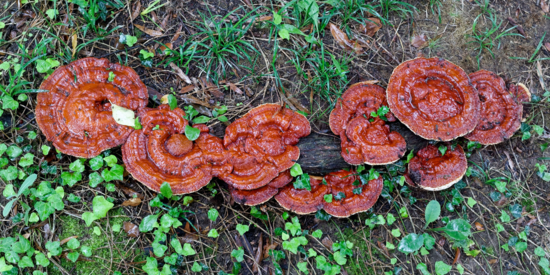Evaluation of pharmacological activities of medicinal mushrooms in the context of dry eye disease
Dry eye disease (DED) is a widespread condition, affecting 5-50% of the population worldwide. Prevalence is steadily increasing, and the condition is rising, becoming one of the top public health concerns. DED is characterized by either hyper-evaporative tears (10% of cases), or a lack of the quality of the tear film (80% of cases), or a combination of both (10% of cases).
Symptoms of DED can occur individually or in combination and include visual disturbance, grittiness, itchiness, and burning sensation.
It is believed that inflammation, which is linked to hyperosmolarity and tear film instability, is the key cause of DED pathogenesis. It has been found that therapeutic remedies, such as corticosteroid, anti-inflammatory treatment, and artificial tears, can alleviate DED pathologic symptoms. However, side effects occurred in over 65% of treated patients and relief was not long-lasting. Therefore, a novel therapeutic DED treatment is needed. Medicinal mushrooms might provide such a treatment, as they have important pharmacological effects, due to their unique constituents. The main constituents of medicinal mushrooms are polysaccharides, phenols, and terpenes, which have antibacterial, antidiabetic, antioxidant, anticancer, anti-inflammatory, and immunomodulatory properties.
In this study, six ethanolic extracts were prepared from the medicinal mushrooms Fomes fomentarius, Ganoderma lucidum, Ganoderma tsugae, Gloeophyllum odoratum, Inonotus oliquus, Laricifomes officinalis (also known as Fomitopsis officinalis). Most of them are widely known for their traditional use. Various experiments with the different extracts were performed, such as a mycochemical characterization, determining free-radical scavenging, cell viability of corneal cells and monocytic cells in culture, wound healing, and intracellular reactive oxygen species (ROS; when out of control, this induces tissue damage, chronic inflammatory processes and cellular functional disturbances), and investigating the activation of immune-mediating cytokines of different cultured cells upon contact with the extracts.
This revealed that lanostane tripterpenes are the main secondary metabolites in all, except one, of the extracts. The broad chemical diversity found in these metabolites may be responsible for the different biological properties observed. It was also found that in in general, the extracts showed to be effective in reducing oxidative stress. In the anti-inflammatory investigations with the different cell-types, it was shown that two of the extracts, Ganoderma lucidum (Fr.) P. Karst. and Gloeophyllum odoratum (Wulfen) Imazeki, have significant effects in reducing the aetiology associated with DED. This is promising for their application in modern therapeutic contexts, such as treatment of dry eye disease.
(Source: Alexander Areesanan, Andreas Wasilewicz, Sven Nicolay, Ulrike Grienke, Amy M. Zimmermann-Klemd, Judith M. Rollinger and Carsten Gründemann, Evaluation of in vitro pharmacological activities of medicinal mushrooms in the context of dry eye disease, Frontiers in Pharmacology, 16:1557359, 2025.
https://doi.org/10.3389/fphar.2025.1557359)

